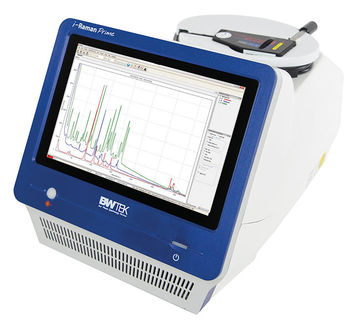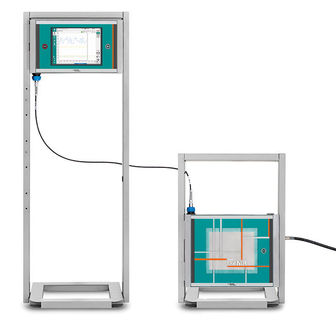To use all functions of this page, please activate cookies in your browser.
my.chemeurope.com
With an accout for my.chemeurope.com you can always see everything at a glance – and you can configure your own website and individual newsletter.
- My watch list
- My saved searches
- My saved topics
- My newsletter
Faraday cup
A faraday cup is a metal (conductive) cup designed to catch charged particles in vacuum. The resulting current can be measured and used to determine the number of ions or electrons hitting the cup.[1] The Faraday cup is named after Michael Faraday who first theorized ions around 1830. Product highlightHow it worksWhen a beam or packet of ions hits the metal it gains a small net charge while the ions are neutralized. The metal can then be discharged to measure a small current equivalent to the number of impinging ions. Essentially the faraday cup is part of a circuit where ions are the charge carriers in vacuum and the faraday cup is the interface to the solid metal where electrons act as the charge carriers (as in most circuits). By measuring the electrical current (the number of electrons flowing through the circuit per second) in the metal part of the circuit the number of charges being carried by the ions in the vacuum part of the circuit can be determined. For a continuous ion beam of ions (each with a single charge) where N is the number of ions observed in a time t (in seconds), I is the measured current (in amperes) and e is the elementary charge (about 1.60 × 10-19 C). Thus, a measured current of one nanoamp (10-9 A) corresponds to about 6 billion ions striking the faraday cup each second. Similarly, a Faraday cup can act as a collector for electrons in a vacuum (for instance from an electron beam). In this case electrons simply hit the metal plate/cup and a current is produced. Faraday cups are not as sensitive as electron multiplier detectors, but are highly regarded for accuracy because of the direct relation between the measured current and number of ions.. See also
References
|
||||||||
| This article is licensed under the GNU Free Documentation License. It uses material from the Wikipedia article "Faraday_cup". A list of authors is available in Wikipedia. | ||||||||








